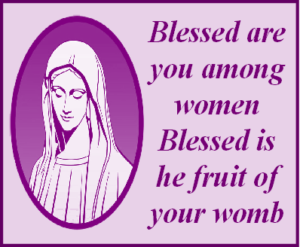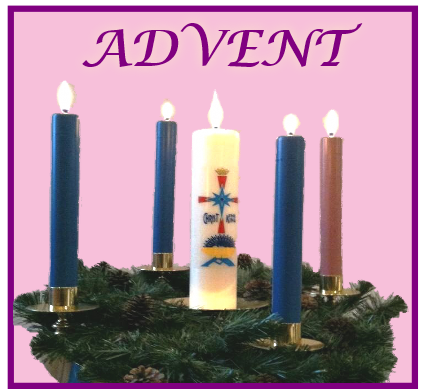Halloween is barely over when Advent arrives, at least in the shops and magazines. The secular appropriation of the season is commercial, concentrated on calendars which advertise products ranging from cosmetic items through chocolates and even football clubs to a selection of whiskeys. A small sample of the product placement appears for each day of the season. In mid-November a review of 20 of the best Christmas advent calendars to buy now ranged from ‘Lifestyle and beauty’ through ‘Food and Drink’ to ‘For Children’, referring to the selection as ‘some of the most luxurious, sustainable and exciting calendars out there to make the days leading up to the holiday almost as fun as the real thing’.[1] A review of ‘beauty advent calendars’ presented ten of these ranging in price from £50 to £350 sterling. The reviewer remarked that ‘if you do the maths, you’ll find that buying an advent calendar is much more economically efficient than buying the products individually’.[2] Economic efficiency is extolled as the measure of Advent, not evangelization as the traditional meaning of the season’s sequence. Culminating in Christmas as a celebration of consumption, the mercantile takeover of Advent throws up a huge spiritual challenge for the church at this time of year. Taking the commercial gloss off Advent gets to the very heart of the Gospel for Advent is the antidote to the major material anxiety experienced by people at this time of year.
God Comes
From the Latin, literally meaning ‘coming to’, Henry Wansbrough OSB writes that ‘with the beginning of Advent we turn to the idea of the coming of Christ, in history (that is, at Bethlehem), in mystery (that is, in the Church) and in majesty (that is, at the end of time)’.[3] These comings link the longing in faith of the people of God for the Messiah, the living in love of the church and the looking forward in hope to the time when Christ ‘hands over the kingdom to God the Father’ (I Cor 15:24). Each of these three comings of God – in prophecy, person and promise – presuppose a period of waiting on the part of God’s people, the wisdom of which is proclaimed in the words of Habakkuk: ‘For there is still a vision for the appointed time; it speaks of the end and does not lie. If it seems to tarry, wait for it; it will surely come, it will not delay’ (2:3). This threefold presence is praised as ‘the counsel of the Lord [which] stands forever, the thoughts of his heart to all generations’ (Psalm 33:11). This is poetically and prophetically portrayed by Hosea: ‘Let us know, let us press on to know the Lord; his appearing is as sure as the dawn; he will come to us like the showers, like the spring rains that water the earth’ (6:3).
Waiting on the Word
 A lovely feature of Advent is the liturgy of the Word. Another way of seeing God’s coming into the world is through nature. A series of readings from the prophet Isaiah in particular present the desert becoming a waterway, fallow land becoming fruitful, flowers filling the wastelands, wild animals being tamed. These lyrical pictures are images of divine involvement because nature is a constitutive part of creation that God cares for. This paean to nature extends to other parts of the Bible as Pope Francis proclaims in his recent Apostolic Exhortation Laudate Deum (Praise God), that his namesake Saint Francis of Assisi ‘accepted the invitation of the biblical Psalms and reflected the sensitivity of Jesus before the creatures of his Father’. Francis finishes the first paragraph by asking: ‘How can we not admire this tenderness of Jesus for all the beings that accompany us along the way?’ Indeed the Advent scriptures indicate the tenderness of God towards all creation including human beings. Another beautiful and blessed feature of the liturgy of the Word is in the series of ‘O’ antiphons announced towards the end of Advent. These feature as both an acclamation and intercession for each day culminating in the call on Christmas Eve, ‘Morning Star, sun of justice, come and enlighten those who live in darkness’. Reprising key scriptural images and titles, they have been beautifully called ‘Seven Bells to Bethlehem’ because they bring us to Christmas, the birth of Christ, the Word made flesh. These antiphons are captured beautifully and sung blessedly in the hymn beginning O Come, O Come, Emmanuel.
A lovely feature of Advent is the liturgy of the Word. Another way of seeing God’s coming into the world is through nature. A series of readings from the prophet Isaiah in particular present the desert becoming a waterway, fallow land becoming fruitful, flowers filling the wastelands, wild animals being tamed. These lyrical pictures are images of divine involvement because nature is a constitutive part of creation that God cares for. This paean to nature extends to other parts of the Bible as Pope Francis proclaims in his recent Apostolic Exhortation Laudate Deum (Praise God), that his namesake Saint Francis of Assisi ‘accepted the invitation of the biblical Psalms and reflected the sensitivity of Jesus before the creatures of his Father’. Francis finishes the first paragraph by asking: ‘How can we not admire this tenderness of Jesus for all the beings that accompany us along the way?’ Indeed the Advent scriptures indicate the tenderness of God towards all creation including human beings. Another beautiful and blessed feature of the liturgy of the Word is in the series of ‘O’ antiphons announced towards the end of Advent. These feature as both an acclamation and intercession for each day culminating in the call on Christmas Eve, ‘Morning Star, sun of justice, come and enlighten those who live in darkness’. Reprising key scriptural images and titles, they have been beautifully called ‘Seven Bells to Bethlehem’ because they bring us to Christmas, the birth of Christ, the Word made flesh. These antiphons are captured beautifully and sung blessedly in the hymn beginning O Come, O Come, Emmanuel.
Heading for Hope
Spiritually Advent streams between the moorings of memory and the horizon of hope. Longing leads the church through Advent, looking backwards for healing, looking forwards in hope. In his 1977 Advent Pastoral Letter Cardinal Basil Hume wrote this assurance: ‘it seems to me that the feast of Advent is the feast of hope, Christian hope, which includes within it not only a looking forward to a time when all will be well, but an unshakeable confidence that, in the providence of God, things will work out in our own lives as well’.[4] Advent assures us that our wounds, weariness and worries do not have the last word in our lives and not to let our hearts be anxious or afraid because God is never absent from our world and our waiting is not in vain.
Our Lady of Advent
 Mary features frequently in Advent. Advent associates us with the Virgin Mary as she prepares to journey with Joseph for the birth of Jesus in fulfilment of the beautiful prophecy proclaimed on a number of occasions during the season that ‘the young woman is with child and shall bear a son, and shall name him Immanuel’ (Is 7:14). The Feast of her Immaculate Conception (8th December) falls in the season and is followed by the memorials of Our Lady of Loreto (Italy) and Guadalupe (Mexico), testifying to the universality of devotion to Mary in the church. At the same time Mary accompanies the church as it anticipates in grace and awaits in glory the coming of the Lord. Following what the Second Vatican Council, called ‘her pilgrimage of faith’, we find a pre-eminent example and encouragement for our own Advent journey. Her accompaniment allows us to be aware of the many moods and movements of our hearts associated with the time of year, excitement and endurance, joy and sadness, brightness and darkness. Mary shows the spirit of Advent, accepting, awaiting, anticipating, arriving.
Mary features frequently in Advent. Advent associates us with the Virgin Mary as she prepares to journey with Joseph for the birth of Jesus in fulfilment of the beautiful prophecy proclaimed on a number of occasions during the season that ‘the young woman is with child and shall bear a son, and shall name him Immanuel’ (Is 7:14). The Feast of her Immaculate Conception (8th December) falls in the season and is followed by the memorials of Our Lady of Loreto (Italy) and Guadalupe (Mexico), testifying to the universality of devotion to Mary in the church. At the same time Mary accompanies the church as it anticipates in grace and awaits in glory the coming of the Lord. Following what the Second Vatican Council, called ‘her pilgrimage of faith’, we find a pre-eminent example and encouragement for our own Advent journey. Her accompaniment allows us to be aware of the many moods and movements of our hearts associated with the time of year, excitement and endurance, joy and sadness, brightness and darkness. Mary shows the spirit of Advent, accepting, awaiting, anticipating, arriving.
 An Advent theme that tragically touches today’s world is the need for peace and the end of warfare. The first and second days of the season show how the coming of peace is central to Advent. The scriptural readings underscore the urgency of peace which sadly is lacking in so many war-torn parts of today’s world where people are struggling for supplies to simply support survival. On Monday of the first week the prophet Isaiah proclaims that the nations are called to ‘go up to the mountain of the Lord’ where ‘He will wield authority over [them] and adjudicate between many peoples; these will hammer their swords into ploughshares, their spears into sickles. Nation will not lift sword against nation, there will be no more training for war’. On Tuesday Isaiah indicates the Messianic peace with images of the wolf and lamb lying down together while the infant inserts his hand ‘into the viper’s lair. The Psalmist links peace with justice in the response, ‘In his days justice shall flourish and peace till the moon fails’. This Advent the church asks with an added agony, Our Lady, Queen of Peace, pray for us.
An Advent theme that tragically touches today’s world is the need for peace and the end of warfare. The first and second days of the season show how the coming of peace is central to Advent. The scriptural readings underscore the urgency of peace which sadly is lacking in so many war-torn parts of today’s world where people are struggling for supplies to simply support survival. On Monday of the first week the prophet Isaiah proclaims that the nations are called to ‘go up to the mountain of the Lord’ where ‘He will wield authority over [them] and adjudicate between many peoples; these will hammer their swords into ploughshares, their spears into sickles. Nation will not lift sword against nation, there will be no more training for war’. On Tuesday Isaiah indicates the Messianic peace with images of the wolf and lamb lying down together while the infant inserts his hand ‘into the viper’s lair. The Psalmist links peace with justice in the response, ‘In his days justice shall flourish and peace till the moon fails’. This Advent the church asks with an added agony, Our Lady, Queen of Peace, pray for us.
A wise spiritual director once asked with all the talk in Advent of God’s coming, what about our going to God. This Advent offers us the opportunity to answer that anew.
Fr Kevin O’Gorman SMA
[1] Irish Independent, 16th November 2023.
[2] The Observer Magazine, 12th November 2023.
[3] The Sunday Word, (London: Burns & Oates, 2012), 5.
[4] A Spiritual Companion – Reflections Through the Year (Brewster, Mass: Paraclete Press, 2000), 115.

